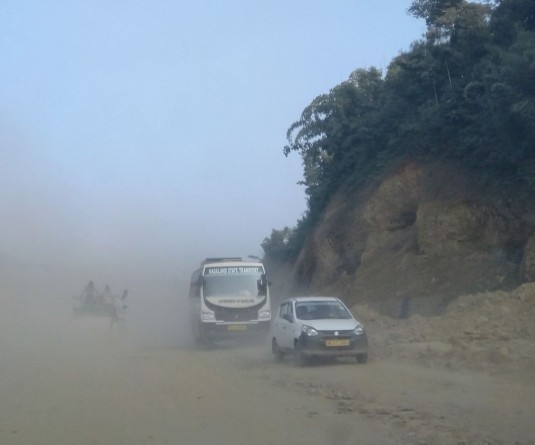Footage of a national news channel posted on its YouTube channel shows the name of Nagaland Chief Minister, TR Zeliang as “Pelaung.”
.png)
Morung Express News
Dimapur | February 6
Inaccurate reporting of North East region that the national media is so infamous for has once again come to the fore. This time the “news” if one may say so, is over the violence arising out of the ULB election in Nagaland.
“Angry Mobs go on Rampage in Nagaland, Set State EC Office on Fire,” CNN NEWS18 (formerly known as CNN IBN) chose as its headline on its website on February 2 when Nagaland ‘finally’ came into its radar. It did not matter that the Press Trust of India report, from which the particular piece of report was taken, had not made any mention of the burning of the State Election Commission Office.
Thereafter, tickers were run in most electronic news media that the Deputy Commissioner Office in Kohima and Longleng as well as the Chief Minister’s residence were burnt down by the ‘mobs’- reports based on unconfirmed social media post and other platforms.
These were all incorrect bits-and-pieces of reports that were spread over telephonic conversations and adorned the many walls of social media platforms-which the national media gullibly and irresponsibly chose to highlight without substantiating. After weeks of chaos, national media decided to wake up to the unfolding situation in Nagaland armed with unconfirmed news and telephonic interviews from its bureau outside the state.
On February 4, when the NDTV decided to the report from, “Epicentre of Nagaland Protests” – a ground reporting from Diphupar, Dimapur, things have already simmered down and the tension had shifted to Kohima.
There is also the absence of equal journalistic diligence and fervor in the national media when it comes to reporting the North East because it is not deemed as “news worthy” or “sellable news.”
Information deficiency
“At best the national media did what it always does - Report as an outsider. So far, they have portrayed our society, especially the men, as misogynistic hooligans. They did not even bother to look into and cross-refer to the Municipal Act, which is the crux of the matter,” maintained Imsutoshi Longkumer, a Consultant and Secretary to an MP in New Delhi.
“Did they analyse how the government ping-ponged their stand on the issue and angered the public and hence the riot? No. Wherever and whoever was their source of information stopped at Post-truth,” he added.
According to Kaustubh Deka, an academic and writer based in Delhi, many of the national media houses are finding it difficult to make sense of it because of the general lack of information/focus on the region for long.
“With the added context of exoticisation of the region and romanticisation of the status of women and nature of the society etc, when suddenly it seems to have exploded they are trying to find explanations in available explanation being fed to them like the narrative of state encroachment into community rights,” Deka said.
The disconnect between centre and periphery
“For me it re-enforces and reaffirms the great cultural divide that exists in perception of North-East by the mainstream,” former Editor Bano Haralu opined when asked about the missing of reportage from the region. “We are in the periphery of all discussion.”
Haralu further said that while the issue started as an opposition to 33% reservation, there were some genuine concerns needing nuance analysis but simply portrayed male versus female fight.
Painting the whole issue with one stroke also reaffirmed the common stereotypes of the region such as violence, insurgency, ethnic clashes, struggle for political power, and so on, she added.
The story of day-to-day struggle of common people struggle, governance and other issues are missing completely.
“It has always been the negative aspects that were always highlighted, and this time was no different. Their level sensitizing issues relating to North East as a whole and Nagas in particular only aggravates the existing pre-conceived misconceptions about us,” Longkumer further pointed out.
Interaction and collaboration
While the absence of ‘fair media coverage’ is operative word, many believe that sensitisation, interaction and collaboration in media, academic and awareness programme would lead a long way to close the chasm between the core and the periphery. When they have a national debate, do they ever get the perspectives from North East on the national issue? Haralu posed adding the populace in the region is more ‘aware’ about what is happening outside its own state.
Forget about the current issue, during the demonetisation or Uniform Civil Code (UCC) debate, did any of the national print or electronic media take the view of people of the region in the debate?, she further wondered. To move forward, Haralu suggested finding “qualified voices” from North East and incorporate them to build the bridge the gap.
Longkumer was most caustic when he said, “Thanks, but no thanks, if they want to report, they should report on cow urine curing cancer and demonetisation curing diabetes” instead of mis-reportage.






